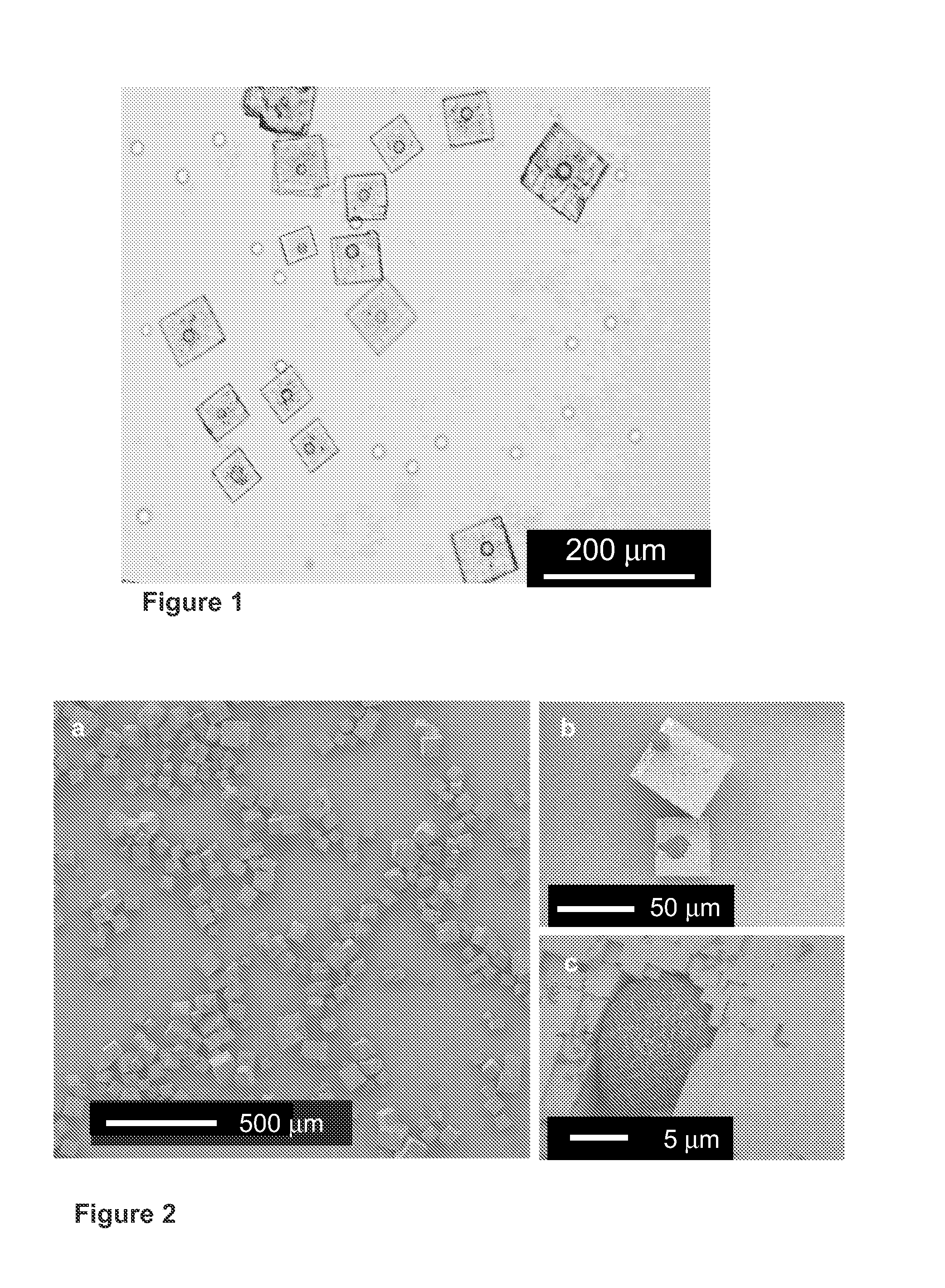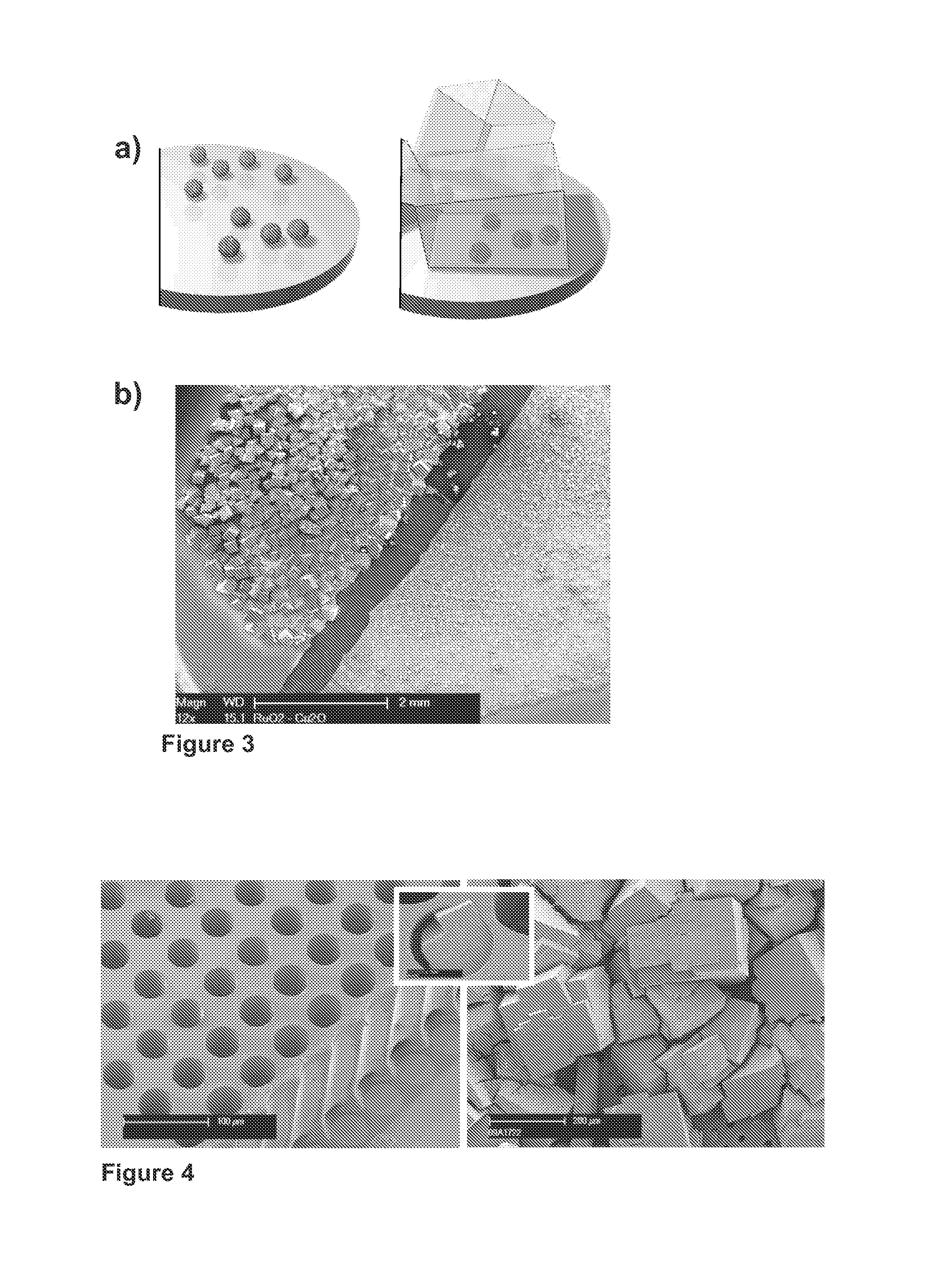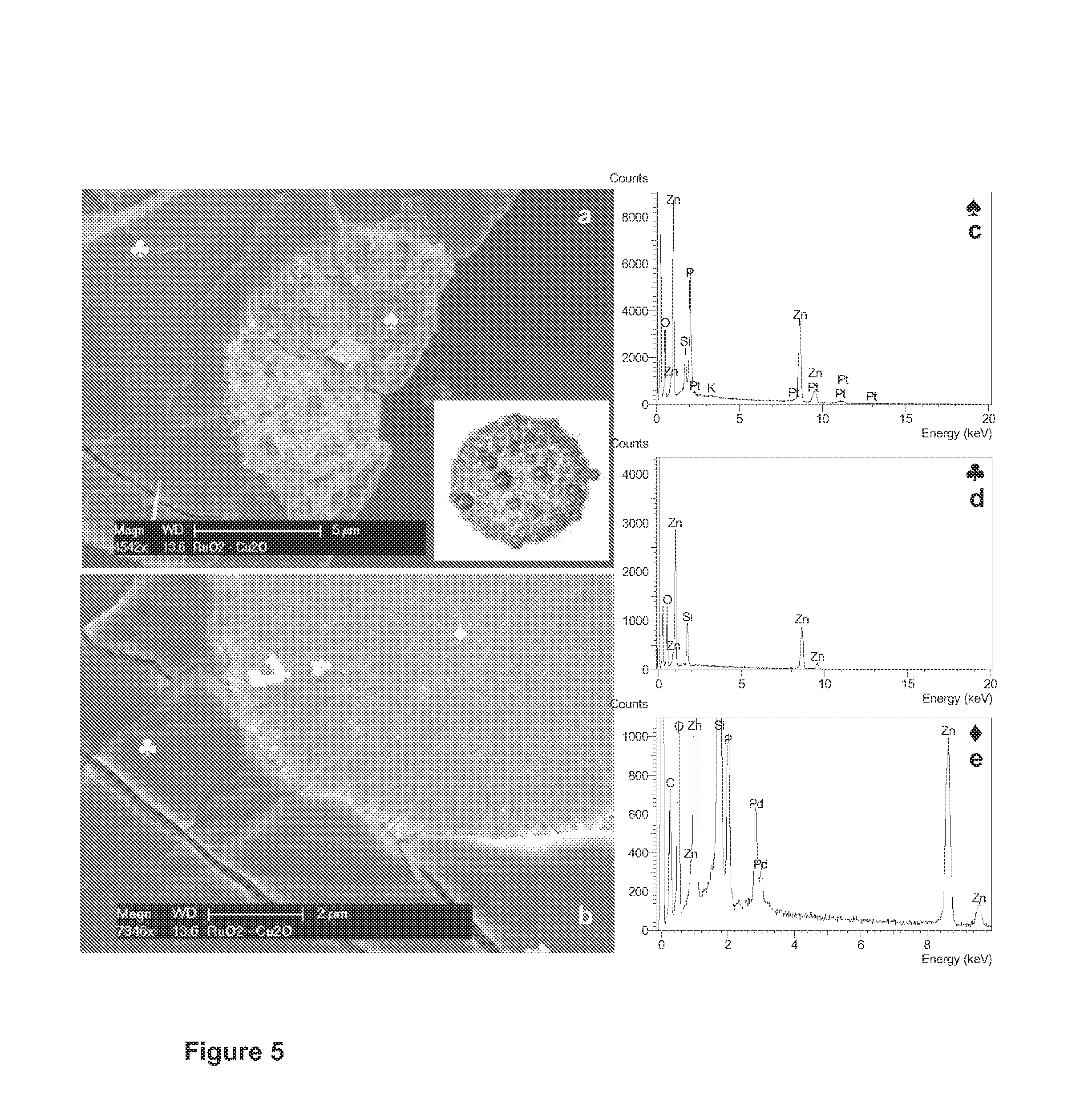Crystallisation facilitators for the synthesis of metal organic frameworks
a technology of crystallisation facilitator and metal organic framework, which is applied in the direction of organic chemistry, phosphorus oxyacids, and group 5/15 element organic compounds, can solve the problems of limited amount of mof-5 that forms, time-consuming protocol, etc., and achieves faster reaction rates and better selectivity for molecular detection
- Summary
- Abstract
- Description
- Claims
- Application Information
AI Technical Summary
Benefits of technology
Problems solved by technology
Method used
Image
Examples
example 1
Desert-Rose Microparticles
[0068]This aspect of the present invention provides a new synthesis method for the formation of inorganic nanoflake microparticles, here named desert-rose microparticles (DRMs), with the exceptional capability to nucleate the crystal growth of metal organic frameworks (MOFs) in a MOF crystal growth medium. These crystallisation facilitator particles provide crystallisation promoting sites for the metal organic framework within a crystal growth medium. The studied crystallisation facilitators are zinc-phosphate compounds, though it should be appreciated that other metal chalcogenide compounds may also be suitable.
[0069]The described method combines surfactants with solvothermal MOF-5 syntheses in a one-pot protocol. MOF-5 was used as an example of a metal organic framework that can be grown using the crystallisation facilitators of the present invention. MOF-5 is one of the most studied metal-organic frameworks and it was a benchmark material for proving num...
example 2
Metal Chalcogenide Nanoparticles
2.1. SiO2 Nanoparticles
[0121]In this aspect of the present invention, several batches of SiO2 nanoparticles (nanoparticles) were synthesized using a modified Stöber approach. Beside pure SiO2 nanoparticles, suspensions with chemically modified nanoparticles have been realised by adding functional amino-, carboxy- and hydroxy-groups to the main SiO2 network by means of suitable sol-gel precursors. FTIR analysis of dried nanoparticle powders confirmed the presence of such functional groups within the SiO2 network. The studied crystallisation facilitators are SiO2 nanoparticles, though it should be appreciated that other metal oxide compounds may also be suitable.
[0122]In the experiments, MOF-5 was used as an example of a metal organic framework that can be grown using the crystallisation facilitators of the present invention. MOF-5 is one of the most studied metal organic frameworks and it was a benchmark material for proving numerous concepts and prope...
example 3
Luminescent Crystal Facilitators
[0169]Multi core-shell CdSe / CdS / ZnS Quantum Dots (QDs) were used as crystallisation facilitators to nucleate the growth of MOF-5 crystals. The QDs result to be embedded inside MOF-5 crystals after adding a QDs suspension in Dimethylformamide—DMF (or Diethylformamide—DEF) into a typical MOF-5 growing medium, following a similar method as previously described in section 2.1. The following reagents were used:[0170]Zn(NO3)2: 0.15g[0171]Terephthalic acid: 0.0172 g[0172]DEF: 4 mL[0173]QDs suspension in DMF* (or DEF): 0.4 mL (* The concentration of QDs in DMF (or DEF) is 0.2 mM)
[0174]The resulting crystals are cubic in shape and show the typical diffraction pattern of cubic MOF-5 (as best shown in FIG. 18)
[0175]The presence of luminescent QDs within the crystals was confirmed using confocal microscopy. Using an excitation laser light at 512 nm, an emission at 640 nm was stimulated. The resulting spatial distribution within the crystal sample is shown in FIG....
PUM
| Property | Measurement | Unit |
|---|---|---|
| time | aaaaa | aaaaa |
| temperatures | aaaaa | aaaaa |
| thick | aaaaa | aaaaa |
Abstract
Description
Claims
Application Information
 Login to View More
Login to View More - R&D
- Intellectual Property
- Life Sciences
- Materials
- Tech Scout
- Unparalleled Data Quality
- Higher Quality Content
- 60% Fewer Hallucinations
Browse by: Latest US Patents, China's latest patents, Technical Efficacy Thesaurus, Application Domain, Technology Topic, Popular Technical Reports.
© 2025 PatSnap. All rights reserved.Legal|Privacy policy|Modern Slavery Act Transparency Statement|Sitemap|About US| Contact US: help@patsnap.com



